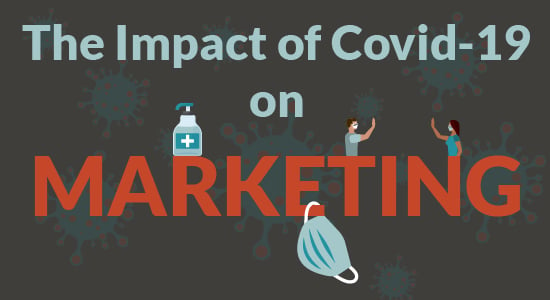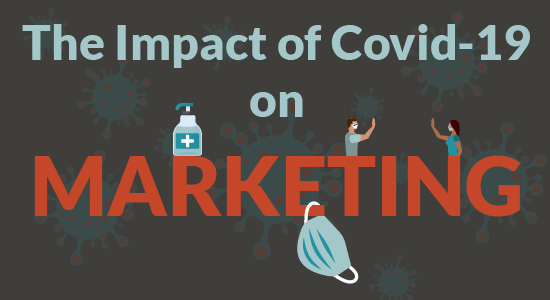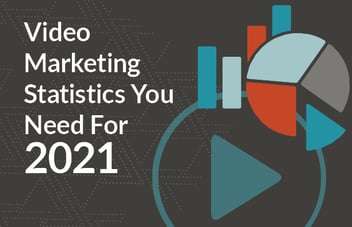COVID-19: What Has The Last Year Meant For Your Marketing?

It has now been a year, or even a little more, since North America saw day-to-day life turn upside as most of the United States went into lockdown mode with the advance of Covid-19 cases in our country.
School sent students home to learn virtually. Businesses sent employees home to work virtually. Public places and many businesses closed their doors—most temporarily, but some forever as the weeks-long shutdown stifled all revenues. Other businesses found themselves needing to rapidly adjust business practices and messaging in a new world.
How did Covid-19 change your marketing strategy and marketing team? From a logistics standpoint, JONES continued to operate largely as we have for years—we’ve been a virtual firm of select team members working from home offices around the country (or globe) for a decade. Our collaboration and communication for and with clients didn’t miss a beat.
But that isn’t true for everyone.
Here 5 ways Covid-19 changed marketing in the last year.
1. Ads went digital
As much as Americans were online even before the pandemic, the shutdown pushed even more reliance on digital channels to reach consumers than ever before. In a June 2020 survey of marketers, 3 in 4 intended to use paid social media and/or display advertising in their regional or local advertising efforts for the second half of 2020. In sharing the data, MarketingCharts.com speculated on the reason for a greater reliance on digital advertising over traditional regional channels such as television or radio. “Advertising on digital channels likely affords regional advertisers the flexibility and nimbleness in messaging to respond to a constantly evolving situation.”
Not only is social media the preferred channel, but the share of the budget being dedicated to it increased from 13.3 percent in February 2020 to 23.2 percent by June.
At the same time, search advertising showed declines in year-over-year from June 2019 to 2020 in all but one of the industries analyzed by SEMRush: health. The health industry was up 21 percent, while travel fell by 75 percent, arts and entertainment fell 44 percent and law and government fell 23 percent.
2. Livestreaming hit its stride
With many in-person events canceled, businesses turned to livestreaming to reach audiences, and consumers seem to approve. Nearly 1 in 4 (23 percent) have said they plan to continue watching more live streaming events post-pandemic. Possibilities for live streaming include events, conventions, product launches, and more. (Source)
3. Marketing teams kept it in-house
It really isn’t surprising that many marketing teams pulled back from reliance on agencies in reaction to anticipated budget cuts, with a Canadian marketing survey showing only 28 percent of marketers increased their reliance on agencies in 2020, compared to 50 percent the year before. The survey cited email marketing, websites and social media as the tasks handled internally during this time, with outsourcing focused more directly on experience and specialized knowledge.
4. Flexibility and innovation will be the new norm
Businesses and brands were forced to react quickly to not only the rapid-fire changes of the advancing pandemic and varying levels of safety restrictions enacted in different states and cities, but also to current events such as the Black Lives Matter movement in response to the death of George Floyd and a fractious presidential election that splintered the nation.
Rather than rely on the kind of year-long planning and long-term strategies that had been the norm, marketers were forced to adjust campaigns and priorities on the fly while maintaining the key brand messaging important to longer term success.
Having shown that it can be done, marketers are likely to face expectations of that level of adaptability going forward.
5. Remote work may become a lasting reality
Sure, there had already been many small firms like ours embracing the idea of remote work, but when March 2020 ended, approximately (what portion) of the U.S. workforce moved from cubicles and corner offices to the kitchen table or spare room turned home office. By some estimates, for as much as 20 percent of the global workforce, that status could remain permanent and the employees would be just as effective.
The rapid deployment of effective communication and collaboration technology at the outset of the pandemic spurred “two years’ worth of digital transformation in two months,” according to Microsoft CEO Satya Nadella in April 2020. Here at JONES, however, we understand that successful remote teams require more than the right technology.
Remote work requires the right team members who can work independently with an inner drive to meet expectations of excellence and are also skilled communicators who effectively collaborate on complex projects.
As much as things have changed in the last year for marketers and in other aspects of business and daily living, there are a few lessons we’ve learned over the years that won’t change, regardless of shifts to content distribution channels, fluctuating marketing budgets or where your marketing team parks their laptop:
- Success requires the ability to adapt and overcome.
- Successful marketing relies on great content.
- The people are more important than the technology.
- When you need help, find the experts who make you a priority.
As you continue to adapt your marketing strategies, budgets and team to the post-pandemic world, keep reading the Inbound Accelerator for everything from big-picture overviews of the industry to step-by-step how-to articles that will help ensure your content creation team works effectively to turn out top-notch content that gets results. Subscribe here for a weekly email with links to our latest articles and online resources.
If your brand is looking for additional expertise to take advantage of the rebounding economy as states and countries reopen for business, let’s talk. Schedule a time in my calendar for a no-obligation consultation about how you can succeed in the post-Covid market.
-1.png?width=1652&height=294&name=Jones(RGB)-1.png)












